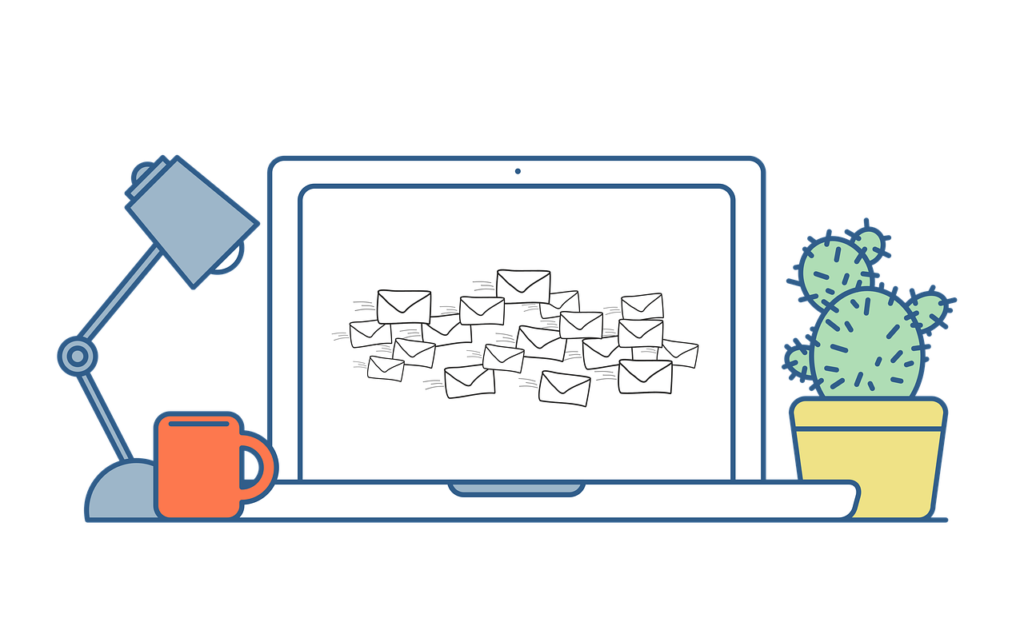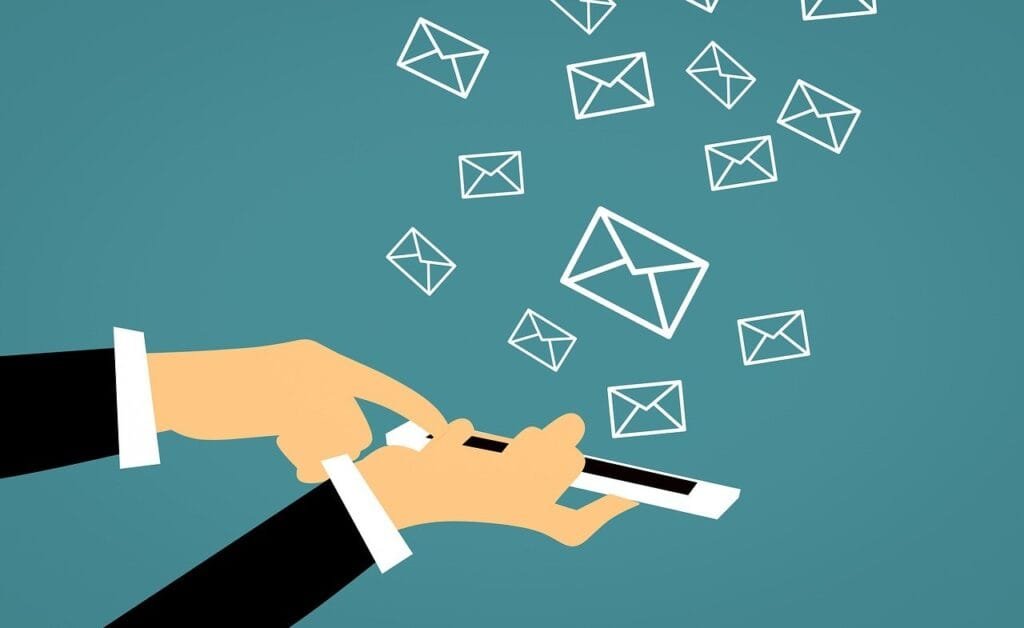This Article has been revised, edited and added to, by Poulomi Chakraborty.
- Understanding the Basics
- The Power of Email Marketing
- Setting Clear Goals
- Knowing Your Audience
- Aligning Email Marketing with Business Goals
- Building a Strong Foundation
- Crafting a Comprehensive Email Strategy
- Data-Driven Decision Making
- Personalization and Segmentation
- Crafting Compelling Content
- Building Relationships Through Email
- Continuous Improvement
- Crafting the Perfect Email
- Executing the Campaign
- Analyzing the Results
- Optimization Strategies
- Achieving 400% ROI
- Continuous Learning and Improvement
- Building and Nurturing Your Email List
- Leveraging Advanced Email Marketing Techniques
- Overcoming Challenges
- Scaling and Future Plans
- Conclusion
I remember the first time I ventured into email marketing. The concept of reaching out to potential customers directly in their inboxes seemed both exciting and daunting. Over the years, I’ve experimented with various strategies, tools, and techniques. Some worked wonders, while others fell flat. But with each campaign, I learned something new and improved my approach.
This article is about my latest email marketing campaign, which astonishingly achieved a 400% return on investment (ROI). Yes, you read that right—400%. It wasn’t just luck or a fluke. It was the result of meticulous planning, execution, and continuous optimization. I’m thrilled to share my journey with you, hoping it inspires and guides you to achieve similar, if not better, results with your email marketing efforts.
Now, let’s dive into the heart of the matter.
Understanding the Basics

Before diving into the specifics of my campaign, it’s essential to grasp the basics of email marketing. This foundation will help you understand why certain strategies worked and how you can adapt them to your campaigns.
The Power of Email Marketing
Email marketing remains one of the most effective digital marketing channels. According to various studies, the ROI on email marketing is often higher than other forms of digital marketing. The reason is simple—email is personal. Unlike social media or search engine ads, an email lands directly in the recipient’s inbox. It’s a direct line of communication between you and your audience.
Setting Clear Goals
Every successful email marketing campaign starts with clear goals. For my latest campaign, the primary objective was to increase sales of a new product we had just launched. But beyond that, I had secondary goals: building brand awareness, growing our email list, and improving customer engagement.
Knowing Your Audience
One of the critical aspects of my campaign’s success was a deep understanding of my audience. I spent a considerable amount of time analyzing data from previous campaigns, studying customer behavior, and segmenting my email list. This segmentation allowed me to tailor my messages to different audience segments, making them more relevant and engaging.
Aligning Email Marketing with Business Goals
Email marketing should be an extension of your overall business strategy. For startups, this means integrating email marketing efforts with your primary objectives, such as customer acquisition, retention, and brand awareness.
Start by defining clear, measurable goals for your email campaigns that align with these broader business objectives. This ensures that your email marketing efforts contribute directly to the growth and success of your startup.
Building a Strong Foundation
A strong foundation is essential for any successful email marketing campaign. This starts with selecting the right email marketing platform that fits your needs. Consider factors such as scalability, ease of use, and available features like automation, segmentation, and analytics. Investing in a robust platform from the start can save time and resources in the long run.
Crafting a Comprehensive Email Strategy
A well-crafted email strategy is key to achieving high ROI. Begin by outlining your target audience and understanding their pain points, preferences, and behaviors. Use this information to develop a content strategy that addresses their needs and interests.
Plan your email content around different stages of the customer journey, from awareness to consideration to decision. This ensures that your emails are relevant and valuable to recipients, increasing the likelihood of engagement and conversions.
Data-Driven Decision Making
Leverage data to inform your email marketing strategy. Analyze data from previous campaigns to identify trends and insights that can guide your future efforts. Use A/B testing to experiment with different subject lines, content, and send times, and apply the learnings to optimize your campaigns.
Additionally, track key performance indicators (KPIs) such as open rates, click-through rates, and conversion rates to measure the effectiveness of your campaigns and make data-driven decisions.
Personalization and Segmentation
Personalization and segmentation are critical components of a successful email marketing strategy. Personalization goes beyond using the recipient’s name; it involves tailoring content based on their preferences, behavior, and past interactions with your brand.
Segmentation allows you to group your audience based on specific criteria, such as demographics, purchase history, or engagement level. This enables you to send highly targeted and relevant emails that resonate with each segment, driving higher engagement and conversions.
Crafting Compelling Content
Content is the heart of any email marketing campaign. Focus on creating high-quality, engaging content that provides value to your recipients. This could include educational content, product updates, customer stories, and exclusive offers.
Ensure that your emails are visually appealing, with a clean and responsive design that looks great on both desktop and mobile devices. Use clear and compelling calls-to-action (CTAs) that guide recipients towards the desired action, whether it’s making a purchase, signing up for a webinar, or downloading a resource.
Building Relationships Through Email
Email marketing is not just about selling; it’s about building relationships with your audience. Foster a sense of community by regularly engaging with your subscribers and encouraging two-way communication.
Respond to their feedback, acknowledge their contributions, and show appreciation for their loyalty. Building strong relationships with your audience can lead to increased trust, brand loyalty, and long-term customer retention.
Continuous Improvement
Continuous improvement is essential for long-term success in email marketing. Regularly review your email performance and identify areas for improvement. Stay updated with the latest trends and best practices in email marketing, and be willing to experiment with new ideas and approaches. By continuously refining your strategy and tactics, you can achieve better results and maintain a competitive edge.
Crafting the Perfect Email

The success of an email marketing campaign largely depends on the emails themselves. From the subject line to the call-to-action, every element plays a crucial role in capturing the recipient’s attention and driving them to take action.
Subject Lines that Grab Attention
The subject line is the first thing recipients see. If it’s not compelling, they won’t open the email. I tested multiple subject lines using A/B testing to find the most effective ones. The winning subject lines were those that created curiosity, offered value, and had a sense of urgency.
Personalization is Key
People love personalized experiences. Using the recipient’s name, referencing past purchases, or recommending products based on their behavior significantly increased engagement rates. I leveraged data from our CRM to personalize each email, making recipients feel valued and understood.
Compelling Content
The content of the email is where you deliver your message. It needs to be clear, concise, and compelling. For my campaign, I focused on telling a story that resonated with my audience. I highlighted the problem our new product solved, shared customer testimonials, and provided a clear call-to-action.
Designing for Impact
The design of your email should be visually appealing and easy to navigate. I used a clean, responsive design that looked great on both desktop and mobile devices. High-quality images, clear headings, and well-placed buttons made it easy for recipients to understand the message and take action.
Executing the Campaign
Planning and crafting your emails is just the beginning. The execution phase is where you bring your strategy to life. This involves scheduling your emails, monitoring performance, and making necessary adjustments.
Timing is Everything
Sending your emails at the right time can significantly impact their effectiveness. I analyzed previous campaigns to identify the best times to send emails to my audience. For this campaign, I chose to send emails on weekdays, during mid-morning hours when engagement rates were highest.
Automating the Process
Automation was a game-changer for my campaign. Using an email marketing platform, I set up automated sequences that delivered personalized messages based on user behavior. This not only saved time but also ensured that each recipient received the right message at the right time.
Monitoring and Adjusting
No campaign is perfect from the start. I closely monitored key metrics such as open rates, click-through rates, and conversions. Based on the data, I made adjustments to improve performance. For instance, if an email had a low open rate, I would tweak the subject line and resend it to those who hadn’t opened it.

Maintaining authenticity requires more than just following trends—it demands a deep understanding of the brand’s core principles and a commitment to consistency. One offbeat yet effective approach involves integrating storytelling into marketing strategies. By weaving narratives that resonate with the company’s vision and mission, brands can forge genuine connections with their audience, transcending fleeting trends.
Moreover, fostering a culture of transparency and collaboration across departments ensures that marketing initiatives remain rooted in the organization’s values, even as external landscapes evolve. This holistic approach not only strengthens brand identity but also fosters trust and loyalty among customers who value authenticity above all else.
Amit Raj, Founder at The Links Guy
Analyzing the Results
The success of any marketing campaign hinges on the ability to measure and analyze the results effectively. For my email marketing campaign, I relied on a variety of metrics to gauge performance and identify areas for improvement.
Key Performance Indicators (KPIs)
Understanding which KPIs to focus on is crucial. Here are the primary KPIs I tracked for my campaign:
- Open Rate: The percentage of recipients who opened the email.
- Click-Through Rate (CTR): The percentage of recipients who clicked on a link within the email.
- Conversion Rate: The percentage of recipients who completed a desired action, such as making a purchase.
- Bounce Rate: The percentage of emails that couldn’t be delivered to the recipient’s inbox.
- Unsubscribe Rate: The percentage of recipients who opted out of receiving future emails.
Insights from the Data
The data from my campaign provided valuable insights into what worked and what didn’t. For instance, I noticed that emails sent on Tuesdays and Thursdays had higher open rates compared to other days. Additionally, personalized subject lines significantly boosted the open rate.
Analyzing click-through rates helped me understand which content resonated most with my audience. Emails featuring customer testimonials and case studies had higher CTRs, indicating that social proof was a powerful motivator for my audience.
Segment Performance
Segmenting my audience allowed me to tailor messages and offers more effectively. By analyzing the performance of different segments, I could see which groups were most engaged and which needed more attention. For example, loyal customers responded well to exclusive offers, while new subscribers were more interested in introductory discounts and product information.
Optimization Strategies
Continuous optimization was key to achieving a 400% ROI. Here are some strategies that played a pivotal role:
A/B Testing
A/B testing, or split testing, was instrumental in refining my campaign. By testing different versions of emails, I could identify the most effective elements. For instance, I tested various subject lines, email copy, images, and calls-to-action. The winning variations were then used in future emails to maximize performance.
Personalization and Segmentation
Personalization and segmentation go hand-in-hand. By leveraging data from previous interactions, I could create highly personalized emails that resonated with each segment. This included using dynamic content to tailor messages based on recipient behavior, preferences, and demographics.
Dynamic Content
Dynamic content allowed me to change parts of an email based on the recipient’s data. For example, I could show different product recommendations to different segments. This level of personalization not only increased engagement but also made recipients feel valued and understood.
Re-engagement Campaigns
Inactive subscribers can drag down your email marketing metrics. To address this, I ran re-engagement campaigns targeting subscribers who hadn’t interacted with recent emails. These campaigns included special offers and surveys to understand their preferences better. The goal was to re-ignite their interest and bring them back into the fold.
Feedback Loops
Listening to feedback from my audience was crucial. I encouraged recipients to share their thoughts on the emails they received. This feedback provided valuable insights into what they liked and disliked, helping me fine-tune future campaigns.
Achieving 400% ROI

Now, let’s talk about the strategies that directly contributed to achieving an impressive 400% ROI.
Clear Value Proposition
Every email in my campaign had a clear value proposition. Whether it was a discount, a new product feature, or valuable content, each email provided something of value to the recipient. This clarity helped increase engagement and conversions.
Strong Call-to-Action (CTA)
The call-to-action is a critical component of any email. For my campaign, I used strong, action-oriented CTAs that left no room for ambiguity. Phrases like “Shop Now,” “Get Your Discount,” and “Learn More” encouraged recipients to take immediate action.
Landing Page Optimization
The experience doesn’t end with the email. The landing page recipients are directed to is equally important. I optimized landing pages to ensure they were aligned with the email content and provided a seamless user experience. This included clear messaging, easy navigation, and fast loading times.
Exclusive Offers
Exclusive offers created a sense of urgency and made recipients feel special. Limited-time discounts, early access to new products, and special bundles were some of the offers that drove high conversion rates.
Customer Testimonials and Reviews
Including customer testimonials and reviews in my emails provided social proof and built trust. Potential customers were more likely to make a purchase when they saw positive experiences from other users.
Continuous Learning and Improvement
Achieving a high ROI is not a one-time feat. It requires continuous learning and improvement. Here’s how I ensured my campaigns remained effective and relevant.
Keeping Up with Trends
Email marketing is constantly evolving. I made it a point to stay updated with the latest trends and best practices. This included subscribing to industry newsletters, attending webinars, and participating in forums and discussions.
Experimentation
I treated each campaign as an opportunity to experiment. Whether it was trying out a new email design, testing a different tone of voice, or using a new email marketing tool, experimentation helped me discover new ways to engage my audience and improve performance.
Learning from Failures
Not every email was a success. Some campaigns didn’t perform as well as expected. Instead of getting discouraged, I analyzed what went wrong and used those learnings to improve future campaigns. Failure is a great teacher, and it played a significant role in my success.
Leveraging Technology
Using advanced email marketing tools and platforms made a significant difference. Tools that offered automation, personalization, and detailed analytics helped streamline my efforts and achieve better results.

Strategic marketing is not just about promoting products but creating a value proposition that resonates with a defined target audience and differentiates a brand in the marketplace.
This involves long-term planning and integrating all marketing activities to support the overall business strategy. When businesses genuinely apply a strategic marketing approach, they do so by looking at immediate market conditions, anticipating future trends, and preparing to capitalize on them.
Unfortunately, not all businesses practice this level of foresight, often focusing on tactical rather than strategic gains.
Looking ahead to 2024 and beyond, AI is set to revolutionize strategic marketing by enabling more sophisticated data analysis and decision-making processes.
AI can automate the collection and analysis of large data sets, providing insights into consumer behavior and market trends at an unattainable speed and accuracy for human analysts.
This allows for more precise targeting and personalization of marketing efforts, optimizing resource allocation, and potentially increasing ROI. For example, AI can predict customer behavior based on their interaction with digital campaigns, allowing companies to adjust strategies in real time to maximize effectiveness.
As AI technology evolves, its integration into strategic marketing will likely become standard practice, offering significant competitive advantages to those who adopt it early and integrate it thoroughly into their marketing strategies.
Sahil Kakkar, CEO and Founder of RankWatch
Building and Nurturing Your Email List
An effective email marketing campaign begins with a high-quality email list. It’s not just about having a large number of subscribers but having an engaged and interested audience. Here’s how I built and nurtured my email list to ensure it was both robust and responsive.
Attracting the Right Subscribers
To build an email list that converts, I focused on attracting the right subscribers. This meant targeting individuals who were genuinely interested in my products or services.
Lead Magnets
Lead magnets played a crucial role in attracting new subscribers. Offering valuable resources like eBooks, guides, or exclusive discounts in exchange for email addresses proved to be highly effective. These lead magnets were tailored to the interests and needs of my target audience, ensuring that the subscribers were genuinely interested in what I had to offer.
Sign-Up Forms
Strategically placed sign-up forms on my website also helped grow my email list. These forms were designed to be simple and non-intrusive, making it easy for visitors to subscribe. I placed them on high-traffic pages, such as the homepage, blog posts, and product pages, to capture the maximum number of leads.
Social Media Integration
Integrating email sign-ups with my social media profiles allowed me to reach a broader audience. By promoting my lead magnets and sign-up forms on platforms like Facebook, Instagram, and LinkedIn, I was able to attract subscribers who were already engaged with my brand.
Nurturing Relationships
Once I had an engaged list of subscribers, nurturing those relationships was crucial. This involved providing consistent value and building trust over time.
Welcome Series
A well-crafted welcome series sets the tone for the relationship with new subscribers. I created a series of emails that introduced my brand, shared valuable content, and highlighted key products or services. This series not only welcomed new subscribers but also guided them through their first interactions with my brand.
Regular Content
Consistency is key in email marketing. I ensured that my subscribers received regular, valuable content that kept them engaged. This included newsletters, blog post updates, product announcements, and special offers. By consistently delivering value, I was able to build trust and maintain high engagement rates.
Segmentation and Personalization
Segmenting my email list allowed me to send highly targeted and relevant content to different groups of subscribers. I used data from previous interactions to create segments based on factors like purchase history, browsing behavior, and engagement levels. This level of personalization made my emails more relevant and effective.
Re-Engagement Strategies
Even with the best efforts, some subscribers will inevitably become inactive over time. Re-engagement campaigns are essential to win back these subscribers and keep your list healthy.
Re-Engagement Campaigns
I created re-engagement campaigns specifically designed to re-capture the interest of inactive subscribers. These campaigns included special offers, personalized messages, and surveys to understand why they became inactive and what could bring them back.
List Cleaning
Regularly cleaning my email list was crucial for maintaining its quality. I identified and removed subscribers who remained unresponsive despite re-engagement efforts. This ensured that my list was composed of engaged and interested recipients, which improved overall campaign performance.
Leveraging Advanced Email Marketing Techniques

To achieve extraordinary results, it’s essential to go beyond basic email marketing tactics. Here are some advanced techniques that significantly contributed to the success of my campaign.
Behavioral Triggers
Using behavioral triggers allowed me to send highly personalized emails based on specific actions taken by subscribers. For instance, if a subscriber abandoned their shopping cart, they received an automated email reminding them to complete their purchase. These timely and relevant emails helped increase conversions.
Dynamic Content
Dynamic content took personalization to the next level. By using dynamic content blocks, I could change parts of the email based on the recipient’s data. This meant each subscriber received a unique email tailored to their preferences and behavior, enhancing engagement and conversion rates.
Advanced Analytics
In-depth analytics provided insights into how my emails were performing and where improvements were needed. I tracked metrics such as heat maps, which showed where recipients were clicking, and engagement scores, which indicated how active my subscribers were. This data-driven approach allowed me to make informed decisions and optimize my campaigns for better results.
Integrating Email with Other Channels
Integrating email marketing with other channels, such as social media and SMS, created a cohesive and seamless customer experience. For instance, I used social media ads to retarget subscribers who opened my emails but didn’t convert. This multi-channel approach helped reinforce my message and increased the likelihood of conversions.
Testing and Iteration
Continuous testing and iteration were key to the campaign’s success. I constantly tested different elements of my emails, from subject lines to images to CTAs. By analyzing the results and iterating based on the findings, I could continuously improve my emails’ effectiveness and maximize ROI.
Overcoming Challenges
No marketing campaign is without its challenges. Here are some obstacles I faced during my campaign and how I overcame them.
Deliverability Issues
One of the biggest challenges was ensuring my emails reached the inbox and not the spam folder. To improve deliverability, I focused on maintaining a clean email list, using double opt-in, and following email best practices, such as avoiding spammy language and regularly monitoring my sender reputation.
Balancing Automation with Personalization
While automation is crucial for efficiency, it can sometimes feel impersonal. To balance automation with personalization, I used dynamic content and personalized messages to ensure each email felt tailored to the recipient, even when sent as part of an automated sequence.
Managing Unsubscribes
Managing unsubscribes was another challenge. While it’s normal for some subscribers to opt out, a high unsubscribe rate can be concerning. I addressed this by ensuring my emails provided value, were relevant to the recipients, and sent at a reasonable frequency. Additionally, I offered an easy way for subscribers to manage their preferences and choose the type of content they wanted to receive.

In our experience, strategic marketing encompasses thorough market research, targeted messaging, and effective campaign execution to resonate with the target audience.
One memorable strategic marketing campaign involved leveraging data analytics to personalize email campaigns, resulting in a 30% increase in click-through rates and a 20% boost in conversion rates.
AI is poised to revolutionize strategic marketing by enhancing customer segmentation, predictive analytics, and personalized content creation, leading to more efficient and impactful campaigns.
Tiago Pita, Brand and eCommerce Director at Whole Food Earth
Scaling and Future Plans
Achieving a 400% ROI with my latest email marketing campaign was a significant milestone, but it’s not the end of the journey. Scaling the success and planning for the future are crucial steps to ensure sustained growth and continuous improvement.
Scaling the Campaign
Scaling a successful email marketing campaign involves expanding on the strategies that worked while maintaining the quality and personalization that drove initial success.
Expanding the Audience
One of the first steps in scaling was expanding my email list with new, engaged subscribers. I continued to use effective lead magnets and sign-up forms, but I also explored new avenues for list growth. Partnering with other brands, running joint webinars, and utilizing influencer marketing helped attract a broader audience.
Increasing Content Frequency
With a larger audience, I increased the frequency of my emails to maintain engagement. However, it was essential to strike a balance to avoid overwhelming subscribers. I introduced a content calendar to ensure a steady flow of valuable and diverse content, keeping the audience engaged without bombarding them with too many emails.
Automating More Processes
Automation played a crucial role in scaling my campaign. By automating more processes, such as welcome series, cart abandonment emails, and post-purchase follow-ups, I ensured that every subscriber received timely and relevant messages. This allowed me to focus on strategic planning and creative aspects of the campaign.
Future Plans and Innovations
Looking ahead, it’s essential to stay ahead of the curve and continuously innovate. Here are some of my plans and ideas for the future:
Enhanced Personalization with AI
Artificial Intelligence (AI) and machine learning are transforming email marketing. I plan to leverage AI to enhance personalization further. By analyzing vast amounts of data, AI can predict subscriber behavior, suggest optimal send times, and personalize content on a deeper level. This will ensure that my emails remain relevant and engaging as my audience grows.
Interactive Emails
Interactive emails are becoming increasingly popular, allowing recipients to engage with content directly within the email. I plan to experiment with interactive elements such as quizzes, surveys, and carousels. These elements can increase engagement and provide valuable insights into subscriber preferences and behaviors.
Video Content
Incorporating video content into emails is another strategy I’m excited to explore. Videos can convey messages more effectively and are highly engaging. Whether it’s product demonstrations, customer testimonials, or behind-the-scenes content, videos can add a dynamic element to my email campaigns.
Omnichannel Integration
Integrating email marketing with other channels to create an omnichannel experience is a priority. This means ensuring a seamless and consistent experience across email, social media, SMS, and even offline channels. By integrating these channels, I can reinforce my message and provide a holistic customer experience.
Continuous Learning and Adaptation
The digital marketing landscape is constantly evolving, and staying updated with the latest trends and technologies is crucial. I plan to invest in continuous learning through courses, webinars, and industry conferences. This will help me stay ahead of the curve and adapt my strategies to changing market dynamics.
Conclusion
Achieving a 400% ROI with my latest email marketing campaign was the result of careful planning, execution, and continuous optimization. By understanding my audience, crafting compelling emails, leveraging advanced techniques, and continuously learning and adapting, I was able to achieve remarkable results.
Email marketing remains a powerful tool for driving business growth, and with the right strategies, you too can achieve impressive returns. Remember, the key to success lies in delivering value, building relationships, and continuously improving your approach.
As you embark on your email marketing journey, take inspiration from my experiences, but also be open to experimentation and innovation. Each audience is unique, and finding what works best for your specific audience will be the key to your success.
Thank you for joining me on this journey. Here’s to your next successful email marketing campaign!
Read Next
- How to use SEMrush: An Explainer
- How to use Zoho CRM: An Explainer
- How to use Tailwind for Social Media: An Explainer
- How to use SocialBee for Social Media: An Explainer
- How to use SproutSocial for Social Media: A Practical Guide






















Comments are closed.